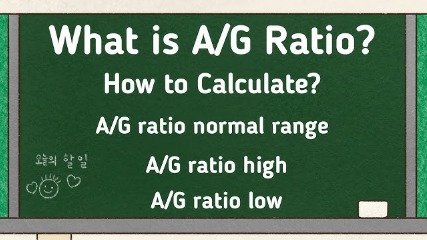BOURSESSENEGAL – When it comes to health metrics, the A/G ratio high is a key indicator that can provide insights into your overall well-being. This ratio, which measures the levels of albumin and globulin in your blood, plays a significant role in diagnosing various medical conditions. In this detailed guide, we will explore what the A/G is, why it matters, how to interpret its results, and what steps you can take if your levels are abnormal.
What is the A/G Ratio?
Defining the A/G Ratio
The A/G stands for albumin to globulin ratio. It compares the concentration of two main types of proteins found in your blood: albumin and globulin. Albumin, produced by the liver, helps maintain blood volume and pressure, while globulin plays various roles, including immune function and transporting substances in the blood.
How is the A/G Ratio Calculated?
To calculate the A/G ratio, healthcare providers use a simple formula:
A/G Ratio=Albumin LevelGlobulin Level\text{A/G Ratio} = \frac{\text{Albumin Level}}{\text{Globulin Level}}
Typically, albumin is measured in grams per deciliter (g/dL), and globulin levels can also be expressed in the same units. A normal A/G ratio usually falls between 1.0 and 2.0, but these ranges can vary slightly depending on the laboratory.
Why Does the A/G Ratio Matter?
Importance of Monitoring Protein Levels
The A/G ratio serves as an important diagnostic tool. Abnormal values can indicate various health issues. A high A/G ratio may suggest certain conditions, while a low ratio can point to others. Understanding these implications can lead to timely interventions and improved health outcomes.
What Can a High A/G Ratio Indicate?
When your A/G ratio is high, it typically suggests that albumin levels are elevated relative to globulin levels. Several conditions can cause this imbalance:
- Dehydration: Increased albumin concentration can occur if you are dehydrated, leading to a falsely elevated A/G.
- Liver Disease: Although liver diseases often lower albumin levels, some conditions can cause an increased synthesis of albumin.
- Kidney Issues: Certain kidney diseases can lead to the loss of globulins, thus increasing the A/G.
- Certain Cancers: Some cancers, particularly multiple myeloma, can alter protein levels in the blood.
Interpreting Your A/G Ratio Results
What Do High A/G Ratio Values Mean?
If your test results show a high A/G , it’s crucial to consult with a healthcare provider. They will evaluate your overall health, consider other test results, and may recommend further testing to determine the underlying cause.
The Importance of Context in Diagnosis
A single high A/G does not provide a complete picture. Medical professionals consider it alongside symptoms, medical history, and additional tests. Conditions like dehydration might not be serious, but they require different management compared to more severe diseases like certain cancers.
How to Manage a High A/G Ratio
Lifestyle Changes to Consider
If your healthcare provider identifies a high A/G , they may suggest some lifestyle changes to help manage your condition. Here are a few recommendations:
- Stay Hydrated: Proper hydration can help normalize your blood protein levels. Aim for at least eight 8-ounce glasses of water daily, adjusting based on activity level and climate.
- Balanced Diet: Incorporate a diet rich in proteins, vitamins, and minerals. Focus on lean meats, fish, dairy, legumes, and plenty of fruits and vegetables.
- Regular Exercise: Engaging in physical activity can improve overall health and support your body’s natural functions. Aim for at least 150 minutes of moderate exercise weekly.
Regular Monitoring and Follow-ups
Your healthcare provider may recommend regular monitoring of your A/G and other blood tests to track changes over time. This follow-up is crucial for managing any underlying health issues effectively.
When to Seek Medical Attention
Recognizing Symptoms of Abnormal A/G Ratios
If you experience symptoms such as unexplained weight loss, fatigue, or persistent swelling, seek medical attention promptly. These signs could indicate underlying health issues that require immediate evaluation.
Importance of Professional Guidance
Consulting with a healthcare professional for any abnormal results is essential. They can help interpret the significance of your A/G in the context of your overall health and guide you on the next steps.
Conclusion: The A/G Ratio High and Your Health
In summary, the A/G ratio serves as an important indicator of your health status. It’s essential to understand what a high A/G means and how it can impact your health. Regular monitoring, lifestyle changes, and professional guidance can help manage your levels effectively.
Always consult a healthcare provider for accurate interpretation and appropriate management of your health. By staying informed and proactive, you can take control of your health and well-being. Remember, the A/G is just one piece of the puzzle, but it can provide valuable insights into your overall health.
REFERENCE : https://www.health.com/



